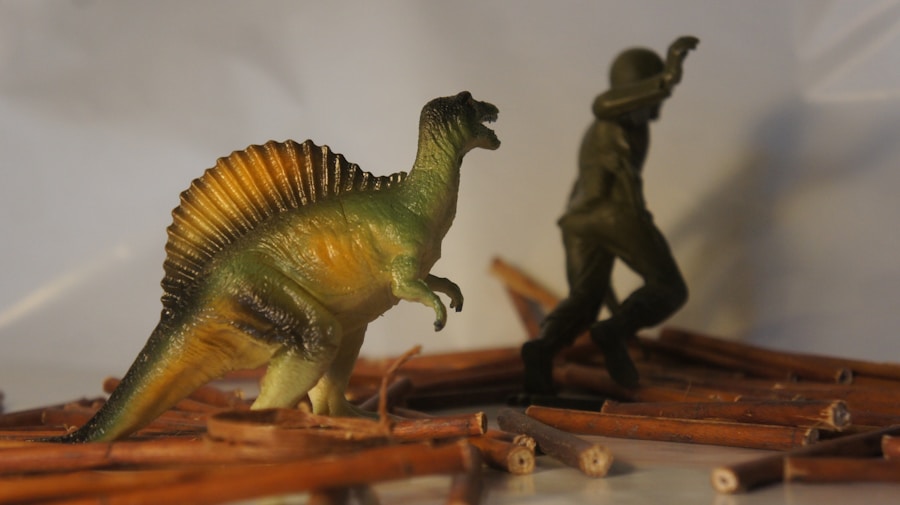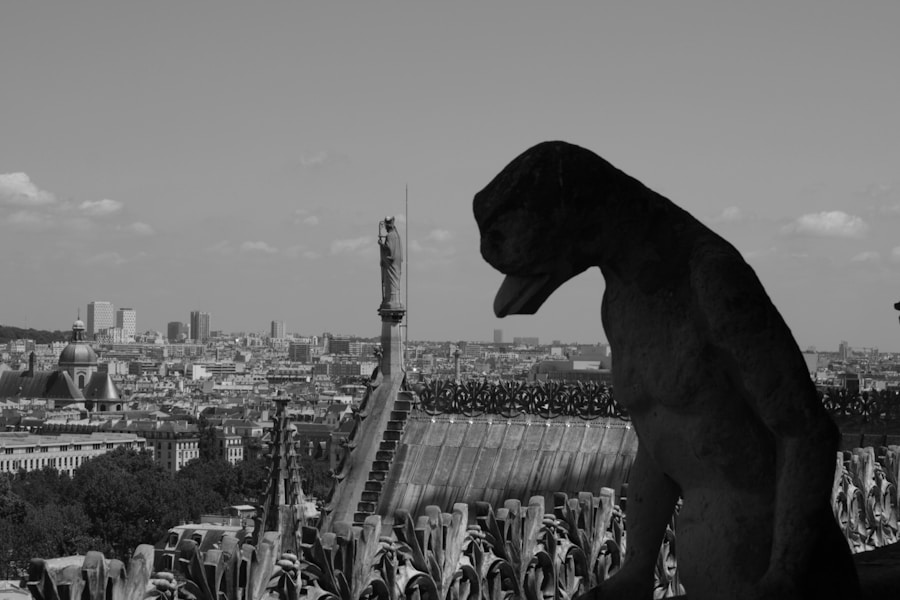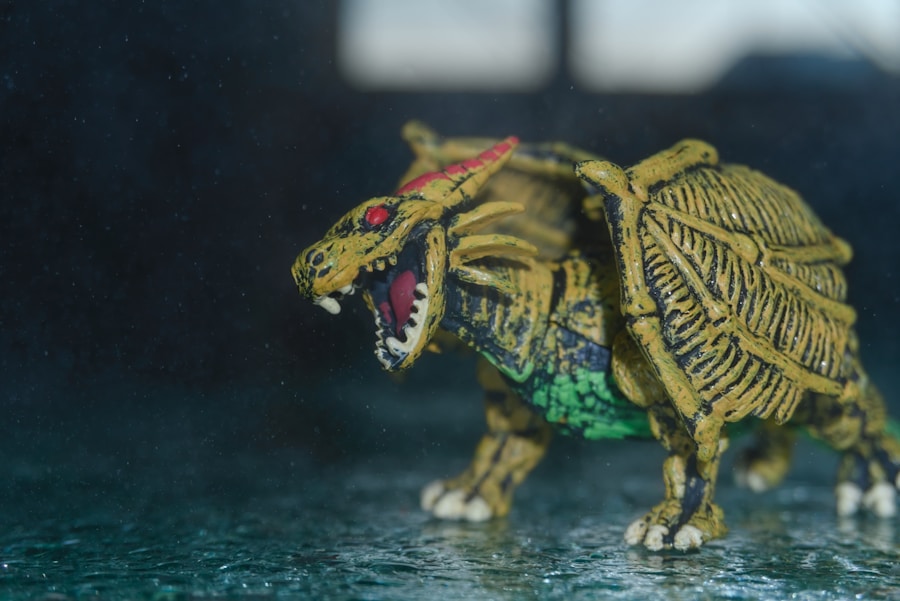When you think of kaiju films, towering monsters wreaking havoc on cities often come to mind. However, the magic behind these colossal creatures lies in the art of miniatures. In the early days of kaiju cinema, filmmakers faced the daunting challenge of bringing these larger-than-life beings to the screen.
Miniatures became their secret weapon, allowing them to create breathtaking scenes that captivated audiences. These small-scale models not only represented the monsters but also the environments they destroyed, providing a tangible connection between the viewer and the spectacle unfolding on screen. The use of miniatures in early kaiju films was not merely a practical solution; it was an artistic choice that defined the genre.
By employing intricate models and detailed sets, filmmakers could manipulate scale and perspective, crafting scenes that felt both grand and intimate. This approach allowed for a unique storytelling experience, where the viewer could immerse themselves in a world where giants roamed. As you delve into the history of kaiju films, you’ll discover how these miniature creations laid the groundwork for a genre that continues to evolve and inspire filmmakers around the globe.
Key Takeaways
- Miniatures were used in early Kaiju films to create realistic and fantastical scenes of giant monsters wreaking havoc on cities.
- Japanese cinema had a significant influence on the development of early Kaiju films, with iconic monsters like Godzilla becoming cultural symbols.
- Miniatures played a crucial role in bringing the fantastical world of Kaiju films to life, allowing filmmakers to create detailed and realistic scenes of destruction.
- Kaiju films and their use of miniatures have had a global impact, inspiring filmmakers and audiences around the world with their unique blend of fantasy and spectacle.
- Technological advancements have continued to enhance the use of miniatures in Kaiju films, allowing for even more realistic and immersive monster scenes.
The Influence of Japanese Cinema on Early Kaiju Films
Japanese cinema played a pivotal role in shaping the kaiju genre, with its rich storytelling traditions and innovative filmmaking techniques.
The Post-War Era: Addressing Societal Fears
The post-war era saw a surge in creativity, as filmmakers sought to address societal fears and anxieties through their work. You can see this influence in early kaiju films like “Godzilla,” where the monster serves as a metaphor for nuclear devastation and environmental concerns.
Depth and Reflection of the Human Experience
The cultural context of Japan during this time infused these films with depth, making them more than just monster movies; they became reflections of the human experience. Moreover, Japanese cinema’s emphasis on practical effects and craftsmanship set a standard for the industry.
Pioneering Techniques and Global Influence
Filmmakers like Ishirō Honda and special effects maestro Eiji Tsuburaya pioneered techniques that would become synonymous with kaiju films. Their dedication to using miniatures allowed for a tactile realism that resonated with audiences. As you explore this era, you’ll appreciate how Japanese cinema’s influence extended beyond borders, inspiring filmmakers worldwide to embrace the art of miniatures in their own monster narratives.
The Role of Miniatures in Creating Realistic Kaiju Scenes

Miniatures serve as the backbone of realism in kaiju films, allowing filmmakers to create visually stunning sequences that transport viewers into a world of fantasy. The meticulous craftsmanship involved in building these models is nothing short of extraordinary. Each miniature cityscape, complete with tiny cars and buildings, is designed with precision to evoke a sense of scale when juxtaposed with the towering kaiju.
This attention to detail enhances the believability of the scenes, making it easier for you to suspend disbelief and immerse yourself in the story. The dynamic interplay between miniatures and live-action footage is another aspect that elevates kaiju films. By combining practical effects with innovative camera techniques, filmmakers can create breathtaking sequences where monsters stomp through cities, leaving destruction in their wake.
The use of miniatures allows for creative camera angles and movements that would be impossible with full-scale sets. As you watch these films, you’ll notice how the seamless integration of miniatures contributes to the overall spectacle, making each scene feel alive and engaging.
Global Impact of Kaiju Films and Miniatures
| Metrics | Statistics |
|---|---|
| Number of Kaiju Films Released | Over 30 films have been released since the 1950s |
| Box Office Revenue | The Godzilla franchise has grossed over 1.6 billion worldwide |
| Miniatures Used | Some films have used over 50 miniature sets and models |
| Global Fanbase | Kaiju films have a dedicated fanbase worldwide, with conventions and fan clubs in many countries |
| Cultural Impact | Kaiju films have influenced pop culture, inspiring numerous parodies, references, and homages in other media |
The global impact of kaiju films is undeniable, as they have transcended cultural boundaries and inspired countless filmmakers around the world. From Hollywood blockbusters to independent productions, the influence of early kaiju cinema is evident in various genres. You can see this legacy in films like “Pacific Rim” and “Kong: Skull Island,” where modern filmmakers pay homage to the miniature techniques that defined the genre.
The fascination with giant monsters continues to resonate with audiences, proving that the allure of kaiju is timeless. Moreover, miniatures have become a symbol of creativity and resourcefulness in filmmaking. As you explore international cinema, you’ll find that many directors draw inspiration from the practical effects used in early kaiju films.
This has led to a resurgence of interest in miniature work across various genres, as filmmakers seek to capture the charm and authenticity that comes from tangible models. The global impact of kaiju films and their miniature effects serves as a reminder that storytelling knows no borders, uniting audiences through shared experiences of wonder and imagination.
Technological Advancements in Miniature Effects for Kaiju Films
As technology has advanced, so too has the art of creating miniatures for kaiju films. While early filmmakers relied on traditional techniques, modern advancements have opened up new possibilities for creativity and innovation. You can see this evolution in the way miniatures are constructed and filmed today.
With the advent of digital tools and 3D printing, filmmakers can create intricate models with unprecedented precision, allowing for even more detailed representations of their monstrous creations. However, despite these technological advancements, many filmmakers still embrace traditional miniature techniques to maintain a sense of authenticity. The tactile nature of physical models adds a layer of realism that digital effects often struggle to replicate.
As you watch contemporary kaiju films, you’ll notice how directors blend practical effects with CGI to create a harmonious balance that pays homage to the genre’s roots while pushing boundaries. This fusion of old and new ensures that miniatures remain an integral part of kaiju filmmaking, preserving their legacy while embracing innovation.
The Cultural Significance of Miniatures in Early Kaiju Films

Miniatures in early kaiju films hold profound cultural significance beyond their role as mere visual effects. They represent a unique intersection of art, technology, and societal commentary. As you explore these films, you’ll find that each miniature cityscape or monster embodies deeper themes related to fear, resilience, and humanity’s relationship with nature.
For instance, Godzilla’s rampage through Tokyo serves as a powerful metaphor for the destructive forces unleashed by modernity and war. Furthermore, miniatures reflect Japan’s post-war identity and its struggle to rebuild after devastation. The careful construction of miniature environments symbolizes hope and renewal amidst chaos.
As you engage with these narratives, you’ll come to appreciate how miniatures serve as vessels for cultural expression, allowing filmmakers to convey complex emotions and ideas through their art. This cultural significance adds layers of meaning to kaiju films, making them resonate with audiences on both personal and collective levels.
Miniatures and the Evolution of Kaiju Films in Global Cinema
The evolution of kaiju films has been marked by a continuous exploration of miniatures as a storytelling device. As you trace the history of this genre, you’ll notice how filmmakers have adapted their techniques over time while remaining true to the essence of miniatures. From the early days of practical effects to contemporary hybrid approaches that blend CGI with physical models, each iteration reflects a desire to push creative boundaries while honoring tradition.
This evolution has also led to a diversification of stories within the kaiju genre. While early films often focused on themes of destruction and survival, modern interpretations explore more nuanced narratives that delve into character development and moral dilemmas. Miniatures continue to play a vital role in this evolution by providing filmmakers with tools to craft visually stunning sequences that enhance storytelling depth.
As you watch these films unfold, you’ll witness how miniatures have shaped not only the aesthetics but also the thematic richness of kaiju cinema across global landscapes.
The Legacy of Miniatures in Early Kaiju Films
The legacy of miniatures in early kaiju films is one that continues to inspire generations of filmmakers and artists alike. As you reflect on this legacy, you’ll recognize how these small-scale creations have left an indelible mark on cinematic history. They represent not only technical ingenuity but also a celebration of creativity that transcends time and culture.
The meticulous craftsmanship involved in building these models serves as a testament to the dedication and passion of those who brought these fantastical worlds to life. Moreover, miniatures have become emblematic of a genre that thrives on imagination and wonder. They remind us that storytelling can be both grand and intimate, allowing us to connect with characters and narratives on profound levels.
As you engage with contemporary kaiju films or explore other genres influenced by this legacy, you’ll find echoes of those early miniature techniques woven into the fabric of modern cinema. The enduring appeal of kaiju films speaks to our collective fascination with monsters and our desire to confront our fears through art—a legacy that will undoubtedly continue for years to come.
